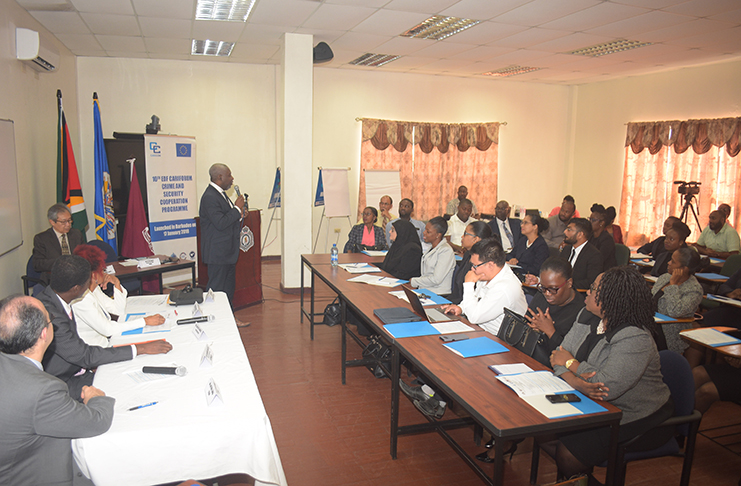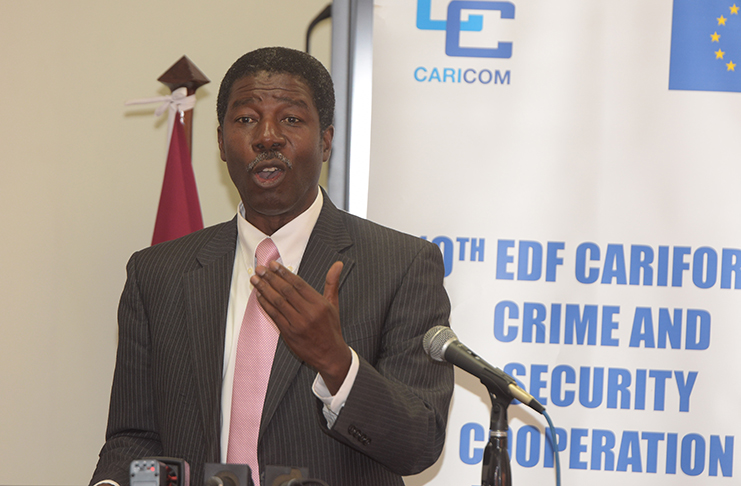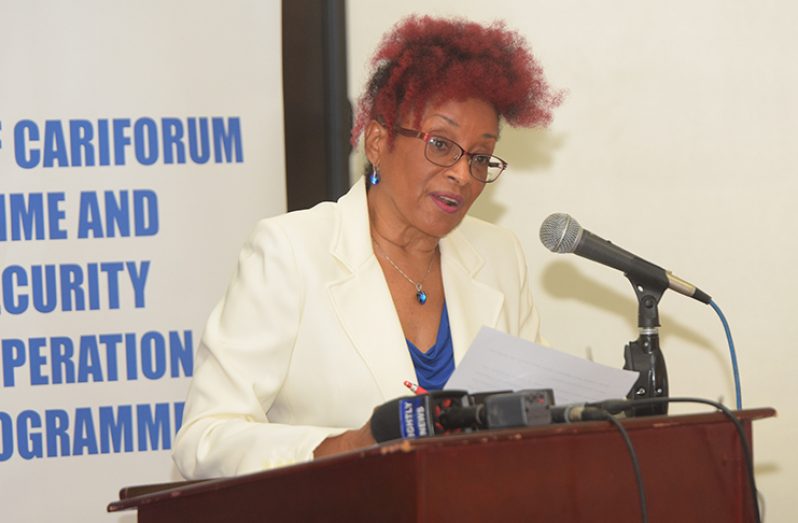THE human, social and economic loss associated with simply locking away offenders whose petty crimes are associated with or driven by drug addiction, causes prisons to become overcrowded and alternatives to incarceration is a better way forward.
This is according to Beverly Reynolds, Coordinator, Health and Human Development of CARICOM Secretariat, during her remarks on Thursday at the Drug Treatment Court Awareness Workshop held at the Felix Austin Police Training College, Camp Road, Georgetown.
The Health and Human Development coordinator said several years ago, the secretariat presented a position paper to the legal affairs committee of CARICOM, advocating for the implementation of alternative sentencing for persons addicted to using drugs.

She explained that the call was grounded in the substantive evidence from research which indicated that drug addiction is a treatable medical condition. Of concern then, Ms. Reynolds said, was the human, social and economic loss associated with simply locking away offenders whose petty crimes are associated or driven by drug addiction and this causes prisons to become overcrowded.
“Incarceration of juvenile offenders with older and sometimes hardened offenders and the lack of treatment and rehabilitation programmes being offered to the incarcerated youngsters have very clearly highlighted the need for a strategy with a proven record of successfully addressing its developments,” she said.
Such a strategy, she said, should not only provide structured, consistent, monitored and supported intervention to offenders whose petty crimes are associated with drug addiction. The Health and Human Development Coordinator said it is important to provide an ethical and human rights response to a medical condition, “we believe that a drug treatment court is one such strategy viewed globally as one of the critical components of a comprehensive move towards alternatives to incarceration and it embraces a public health approach.”
She explained that article 36 (1) (d) on the UN Single Convention on Narcotic Drugs 1961 states when abusers of drugs commit offences, the parties may provide, as an alternative to conviction or punishment, measures of treatment, education, aftercare, rehabilitation and social reintegration.
As such, Ms. Reynolds also said the Drug Treatment Court also addresses a critical dilemma facing persons with a problematic past. “Reliance on criminal sanctions as a major response to illicit drug use invariably results in denial of human rights for this population, as drugs remain defined as law enforcement rather than a health problem, poor health outcomes in this population follows because health care and health services are more difficult to provide to a now stigmatised and underground population,” she said
Further, she explained that the promotion of rights is an essential precondition to addressing these problems and improving the health of individual drug users and improving the public health of the community. Adding that the Judiciary, other criminal justice partners, civil society and policy makers must provide an integrated and multi-sectorial approach, Ms. Reynolds said this allows for the crafting of interventions that is in the best interest in the group of offenders, the community and the society at large.
Organisation of American States (OAS) Representative Jean Ricot Dormeus, said that the workshop gives participants an opportunity to make a real contribution to the improvement of society. “Just imagine we can reduce the number of people addicted to drugs, having an impact on the levels of crimes and violence in our society, turning those people into productive citizens would be a wonderful achievement for Guyana,” he said.
Acknowledging the difficulties with the prison system in Guyana, Dormeus said when a prison is overcrowded, issues with prisoners result in negative consequences. “But because of programmes such as drug court treatment, we can achieve the kind of goal and at the same time stick to the idea of justice because when the drug court treatment is established, you may have an issue with the application of justice and human rights, but actually, these kinds of programmes allow you to make an impact on the issue and at the same time stick to the vision of human rights and justice,” the OAS representative said.
Ontario High Court Judge, Justice Kofi Barnes, said there are two sides of an individual and the justice system usually deals with one side and there is a major cost for a drug addict that continuously revolves around prison.

Minister of Public Security Khemraj Ramjattan had said drug offenders are clogging up the streets, courts and prisons and “we want to shut that revolving door, which brings these drug offenders back to court again and again and our existing regime sees them not having an alternative to prosecution, leading to over 50 per cent back to jail.”
A 2016 Household Drug Survey in Guyana has revealed that 66.5 per cent of the respondents believe that drug use has increased in Guyana over the past few years, while 40.9 per cent believe that it is easy to access marijuana. According to the survey, 40.9 per cent of the respondents believe that it is easy to access marijuana in Guyana although the substance is still an illegal one, while 46.7 per cent opined that drug use will get worse in the coming years.





.jpg)








